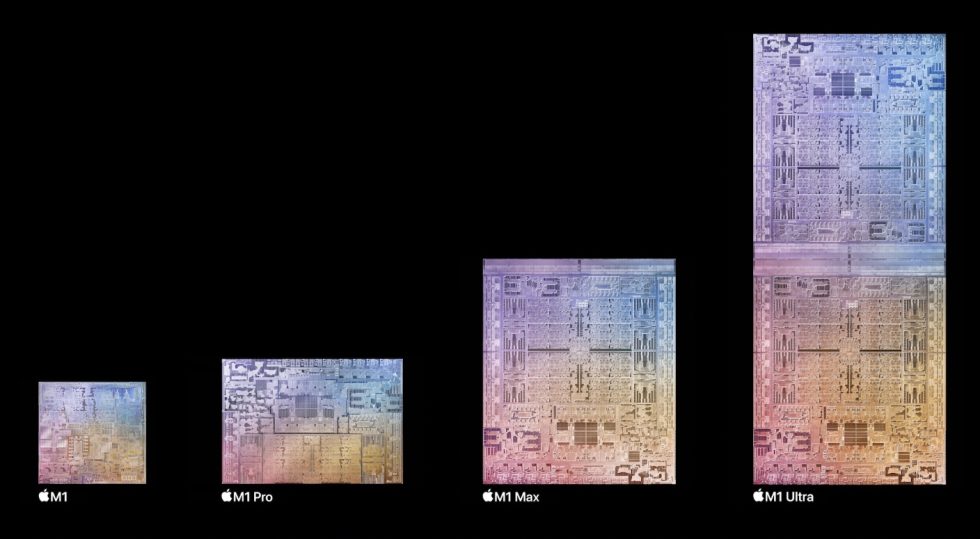An M1 Ultra benchmark, a PowerPC Easter egg, and other Mac Studio details

Enlarge / Apple's Mac Studio and Studio Display. (credit: Apple)
Apple's announcements of the Mac Studio, the Studio Display, and the new top-end M1 Ultra chip earlier this week focused on those devices' headlining features, but there are always more details to explore as people dig through the spec sheets and Apple responds to questions from the press. Ahead of our full reviews, we've compiled some of the most interesting details about the new hardware.
M1 Ultra: It's not really "chiplets"
All the members of the M1 family. (credit: Apple)
When the M1 Ultra was announced, we speculated based on how Apple was describing it that the processor was using a chiplet-based design, connecting two separate M1 Max processor dies together using a high-speed interconnect like AMD's Infinity Fabric. That turns out not to be strictly true-the M1 Ultra will look like one big piece of silicon, just as it appears in Apple's render shots, two M1 Max chips packaged together with a silicon interposer between the two. ComputerWorld describes it as one large "840mm squared die."
The main risk with creating such a huge chip is that manufacturing yields will be low, as more surface area increases the likelihood that there will be a defect somewhere in the chip. But TSMC has been making M1-based chips on its 5 nm process for well over a year now, giving it plenty of time to optimize yields. And Apple is able to do some binning with the M1 Ultra (i.e., selling some chips with defects as lower-end models with the defective parts turned off), since there are versions with both 48 and 64 GPU cores.
Read 13 remaining paragraphs | Comments